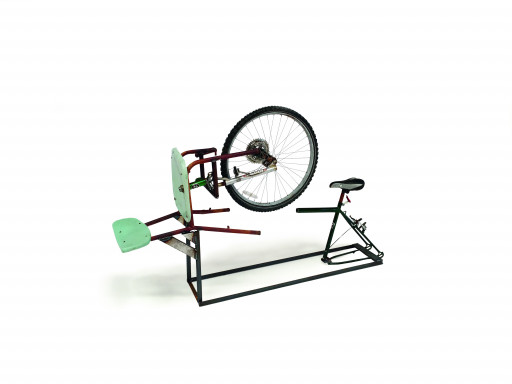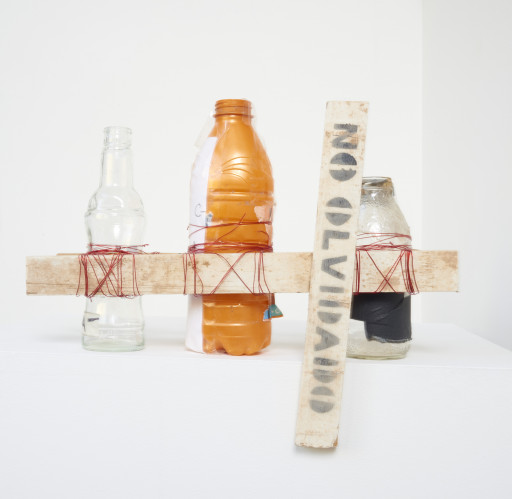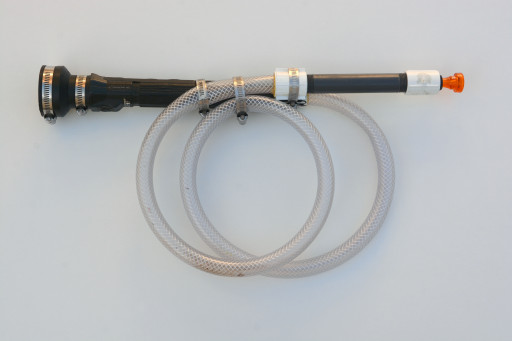The extent of the work of experimental composer, sonic architect, performance artist and visual media artist Guillermo Galindo, redefines the conventional limits between music, the art of music composition and the intersections between art disciplines, politics, humanitarian issues, spirituality and social awareness.
Galindo’s artistic practice emerges from the crossroads between sound, sight and performance and includes orchestral compositions, instrumental works, opera, sculpture, visual arts, computer interaction, electro-acoustic music, film making, instrument building, three-dimensional immersive installation and live improvisation. His acoustic compositions include major chamber and solo works, two symphonies commissioned by the UNAM (Mexico university symphony orchestra), the Oakland Symphony Orchestra and choir, and two operas with libretto by Guillermo Gomez Peña and Anne Carson.
Galindo’s graphic scores and three-dimensional sculptural cyber-totemic sonic objects have been shown at major museums and art biennials in America, Europe, Asia including (amongst others) documenta14 (2017), Pacific Standard Time (2017), FIAC (2018) and Art Basel (2018-19).
His work has been featured on: BBC Outlook (London), NHK World (Japan),Vice Magazine (London), HFFDK (Germany), RTS (Switzerland), NPR (U.S.), CBC (Canada), Art in America (U.S), Vice Magazine (Canada-US) Reforma Newspaper (Mexico), CNN, The New Republic, The Wall Street Journal and the New York Times (U.S.).
His compositions have been performed at the CTM Festival (Berlin), San Francisco Jazz Festival, San Francisco Electronic Music Festival (U.S.), Schrin Kunsthalle (Frankfurt) and The Paramount Theater (U.S.) among many other venues.
In 2011 Galindo embarked on a unique collaboration with lauded American photographer Richard Misrach which became a traveling exhibit and an award-winning book published by Aperture Foundation. Border Cantos features Misrach’s photographs of the U.S./ Mexico border and Galindo’s sonic devices and graphic musical scores created from detritus left behind by immigrants and the border patrol apparatus.
Selected venues that have exhibited Border Cantos include The Institute for Contemporary Art, Boston (2019), Crystal Bridges Museum, Bentonville, Arkansas (2017), Pace Gallery, New York (2017) and the San Jose Museum of Art (2016).
Upcoming exhibitions of either the entirety or a portion of Border Cantos will be on view at the Cantor Museum, Stanford University (2020) as part of When Home Won’t Let You Stay and at the High Line in New York (2020-21) as part of The Musical Brain.
Outside of the Border Cantos series, Galindo has continued his solo work as an artist and composer. In 2017 Galindo was invited to participate in the documenta14 art biennale showing the Echo Exodus series. This body of work, which has been exhibited in both Athens, Greece and in Kassel, Germany, consists of sonic devices and graphic scores made from belongings left behind by African and Middle Eastern migrants and refugees.The version displayed at documenta14, entitled Fluchtzieleuropaschiffbruchschallkörper, included two immigrant boats he found abandoned on the island of Lesbos in 2016.
Following migration routes, the wreckage of these boats traveled from Greece to Germany and became sonic devices for compositions Galindo specifically wrote and performed at documenta. Images of these boats became iconic during the European refugee crisis and were published around the world. This work, as well as Galindo’s commissioned piece by the Kronos Quartet Fifty for the Future program, allowed him to continue to explore his interest in the intersection of art and social consciousness. His interactive string quartet Remote Control, which comments on the dehumanization of violence and virtual reality premiered in 2018 in San Francisco, California.
In 2017 the Getty’s Pacific Standard Time biennale included Galindo’s solo exhibit Sonic Botany, an installation commenting on genetics and colonization and the environment in a post-apocalyptic world, was shown at the Huntington Library in Pasadena, California.
Guillermo Galindo presently teaches at the California College of Arts in San Francisco and has also been invited as a Mohr Visiting Artist at Stanford University (2018) and as a resident artist at Vanderbilt University.


